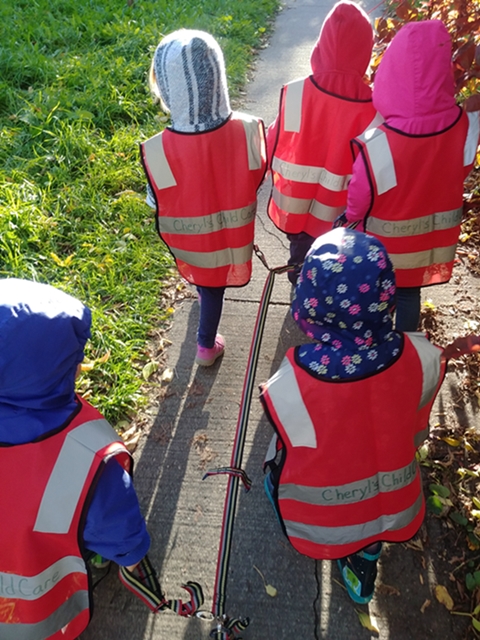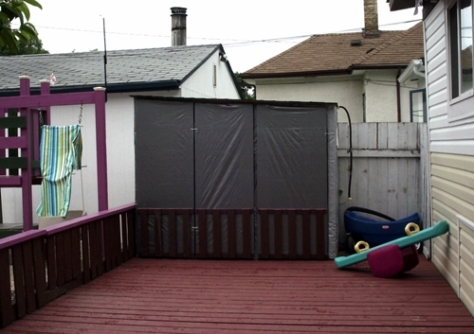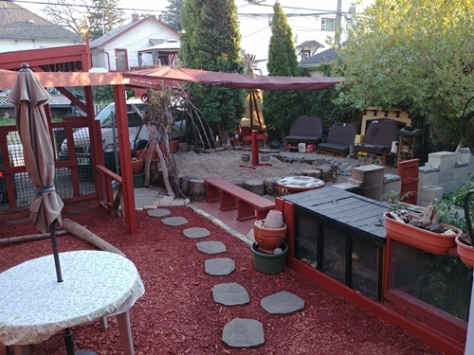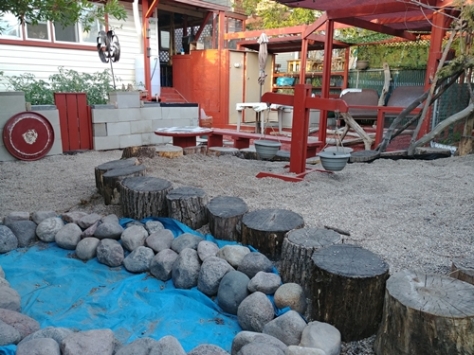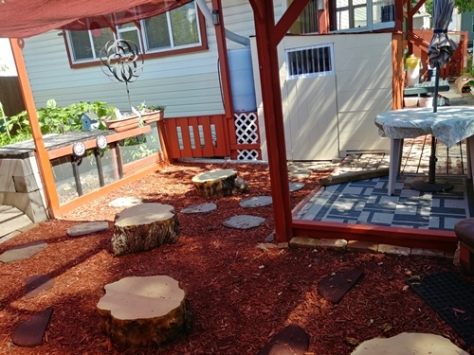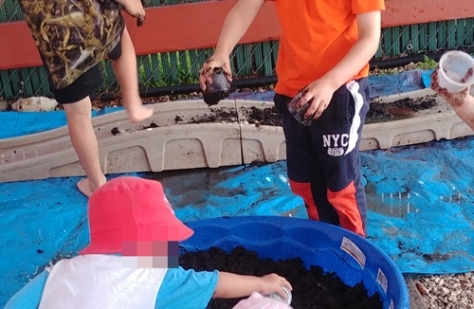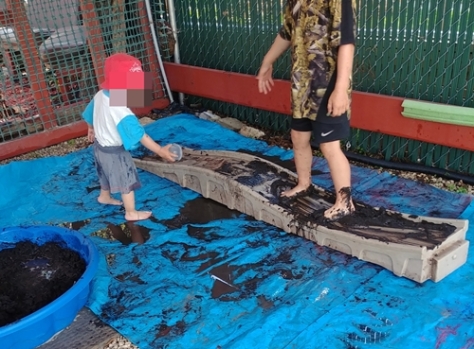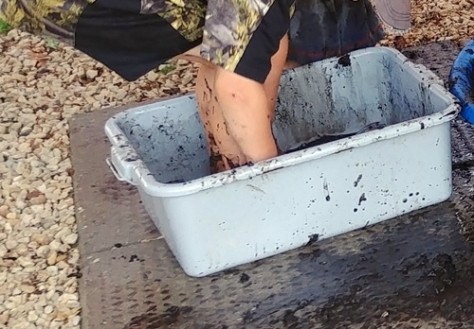It is no secret that I love cats. I’ve written before about my view on having pets in a childcare home and about our adoption of a tiny little stray, the struggle to introduce the new cat, and the eventual loss of an old one. So, it should come as no surprise that when one of my childcare families fostered a momma cat and her kittens…I picked one.
To be honest, originally I just picked him out as my favourite one of the litter with no intention of actually adopting him but…it seems I have no self control *sigh*. I was a little apprehensive about bringing a new kitten into our home. Malta, our almost 14 year old cat is easily stressed and within seconds of the kitten being carried in the door she ran upstairs to vomit. She was not actually my biggest concern – she takes a bit of time to adjust to change but usually adapts without too much fuss.
Four year old Monkey (legal name Button) was the one I was a little worried about. Monkey is a not-so-small-anymore cat with a HUGE attitude. She has a tiny little squeaky mew but makes up for it with a loud deep snarly growl. She uses that growl to voice her opinion about everything. Her growl doesn’t always mean ‘NO! Leave me alone’ when someone tries to pet her, sometimes it is a demanding ‘Sit still, I want to sleep on your lap.’ and she doesn’t take no for an answer.
Not only did Monkey vehemently disapprove of Montgomery visiting, she also complained about any people who touched him or breathed the contaminated air around him. However, she is all noise no action so I figured she would eventually accept him – he was so small and adorable;

We did plan to keep Montgomery in quarantine for the first two weeks before letting the other cats ‘greet’ him. Rather than lock him away in a room by himself we decided the loft in the playroom would make a good temporary kennel. There I could easily observe him throughout the day and bring him out for supervised playtime with the children. Monte did not approve of the plan – it was less than one day before his first escape from quarantine and we soon discovered he could not be contained. Every new barrier we designed was treated as a challenge and quickly conquered.

Not only was it impossible to keep him IN the loft, we also couldn’t keep him OFF the loft. He climbed the support posts and ran laps around the OUTSIDE of the netting and over the top taunting me from the nine foot ceiling as I fretted about him falling and breaking his tiny little legs. We eventually managed to quarantine him on the main floor of the house – leave the older cats ‘safe’ space upstairs.
He loved toys – his toys, the children’s toys, my toys and things that were not toys.
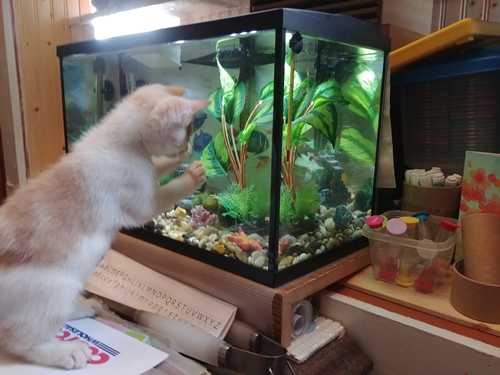
I have always taught the children to respect the cats’ space – don’t chase them, wait for them to come to you, be gentle and kind. Monte would have no part of that. I tried to keep him out of the playroom when I wasn’t able to directly supervise the toddler/cat interactions but he’d fly over the gate to play his favourite ‘come and get me’ game.

He demanded his own chair at quiet time – would knock them over and try to open them himself if I didn’t set one up for him.

The older cats cowered upstairs long after the two week quarantine. Even with food bribes, coaxing and cuddles they were reluctant to be near him. After all, he was quite terrifying.

Malta was the first to accept his presence – it took about four weeks. As long as he was being calm she would allow him to be near her. Sometimes when he was sleeping she would cuddle and bathe him. She tried to teach him to be polite but she would not tolerate any playful behaviour – she was far too old for that.

It took Monkey longer. Even after she started venturing downstairs into enemy territory she did not want him near. Monte however continued to push boundaries and considered her his favourite squeaky toy – poke its butt and it makes a funny noise.

Montgomery continued to find new things to play with – and destroy. He loved playing fetch with his mouse – it was the only way we could get out of the house without him trying to escape. Throw the mouse down the hall and rush out the door before he gets back. When we returned he’d be sitting, waiting by the door with the mouse in his mouth. We bought him dog toys after he tore up some cat toys.
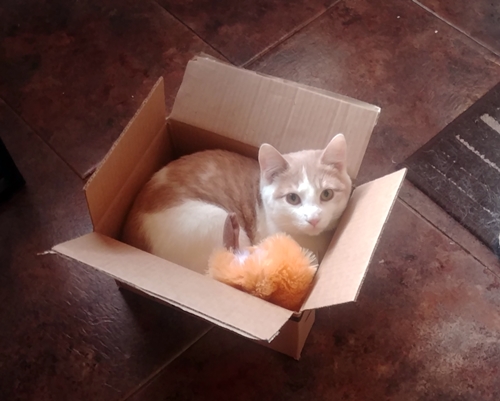
We built him a floor to ceiling scratching post with shelves to sit on and hanging toys.
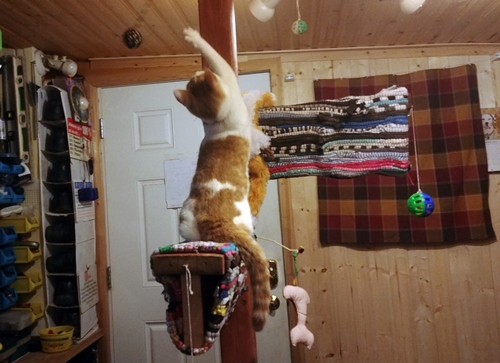
Monkey was starting to enjoy having a playful little brother – she doesn’t like toddlers and Malta doesn’t play (Monkey does chase and bully her sometimes). Still, in order to keep her ‘grumpy cat’ status Monkey wouldn’t admit she liked the little cat. If we caught her in the midst of a wrestling match or cuddle/bath time she’d immediately stop and run away growling like ‘Ewww, I acidentally got some of its fur on my tongue’. We were not fooled by the fake distaste. If she wanted to play and didn’t know where he was she would toss one of his toys around and wait for him to show up. She also liked playing tag games on the cat post.

It was actually really nice to see Monkey playing now. After living with an old cat she had been getting very lazy – and ’round’.
There was one bothersome aspect of Montgomery’s that I initially blamed on ‘teething’ and I hoped he would outgrow it but instead it was getting worse. Monte likes to chew and eat things that are not food. He has chewed through just one power adapter cord but there are many other things he has chewed or eaten. Whenever I find items that have been chewed or cat barf with foreign objects in it I try to kitten proof more but he just moves on to chewing something else.
This is the part of the post I didn’t originally plan to write. In early December Monte stopped eating. He still begged a little when the other cats did but he walked away from any food he was given. He stopped playing, he stopped purring when we petted him, he didn’t like to be picked up or carried and he wouldn’t even drink water. We were worried he had an intestinal blockage so we took him to the vet.
After a hospital stay, IV fluids, pain meds, antibiotics, several x-rays, and some prescription food he seems to be back to normal now. Thankfully he didn’t need surgery. Monkey hated him for a few days after he returned but she has gotten over it and they play together again. Monte still eats things he shouldn’t *sigh*. The vet bill cost me more than if I had closed the daycare for two weeks and taken a vacation.
I’d rather have a cat than a vacation – even if he is a brat. Make better decisions Montgomery.







